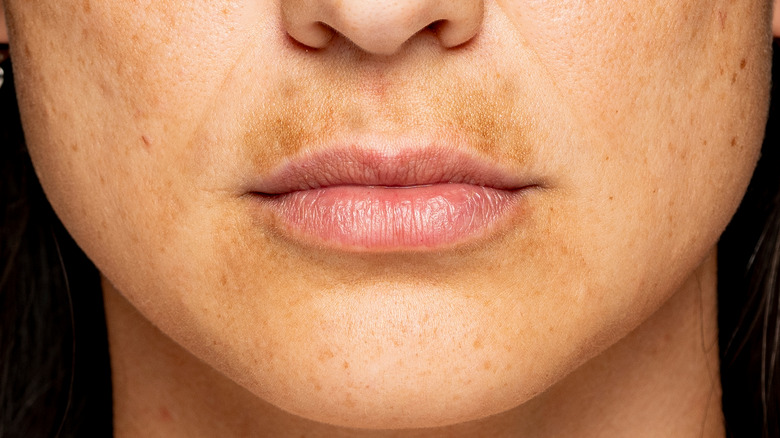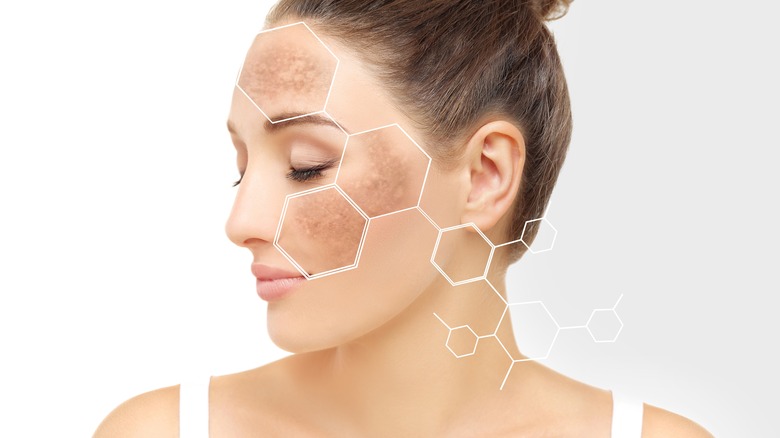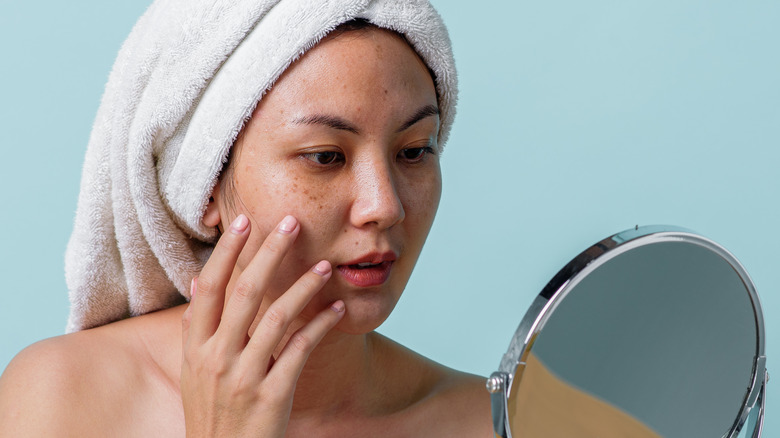How Tranexamic Acid May Transform Your Skin Discoloration
There are a lot of different acids that are used as ingredients in skincare products. Though it can be difficult at times to keep track of them all and remember what benefits they have for your skin — after all, there are some products that just aren't worth the hype — we're here to introduce another acid into your skincare vocabulary. It's called tranexamic acid, and it's being included more and more frequently in the beauty industry.
While tranexamic acid is typically a medication to promote blood clotting for those with heavy menstrual periods or bleeding disorders, per the NHS, that isn't all it's used for. When applied to your skin, it has some other benefits, and the primary one is in its ability to help with some forms of skin discoloration (via Healthline).
Wondering if using tranexamic acid is right for your skincare routine? We have some more information you need to know about this ingredient to help you in making that decision.
Tranexamic acid can address skin discoloration
Healthline quoted dermatologist Anna Guanche, MD, who spoke about how tranexamic acid can aid in reducing some forms of skin discoloration. "Tranexamic acid for the skin can act as a brightening agent to reduce dark spots and improve hyperpigmentation. This is because tranexamic acid interferes with melanin production," Dr. Guanche explained. In addition, it has been shown by various studies to improve skin discoloration from other sources, including acne and sun damage.
"There aren't many options when it comes to safe, effective skin-lightening bioactives," cosmetic chemist Krupa Koestline told InStyle, continuing, "Hydroquinone is banned in the EU and restricted in many countries due to its safety concerns. Tranexamic acid has shown promising evidence as a plasmin inhibitor and therefore an effective treatment for UV induced discoloration, dark spots, and redness."
In other words, if you have skin discoloration that you want to address, the safety and portability of tranexamic acid might make it a good skincare ingredient to add to your routine when compared to other ingredients like it.
There are some other factors to keep in mind
Fortunately, there aren't any major red flags when it comes to the safety of tranexamic acid. Per Healthline, it's safe for all skin types to use, and it's safe for use during pregnancy — though cosmetic chemist Ron Robinson told Byrdie that tranexamic acid is potentially not the greatest for people who have sensitive skin.
Because tranexamic acid interferes with the production of melanin and is a skin-lightening ingredient, however, keep in mind that it may not be the right skincare ingredient for everyone to try. If you have a medical condition that already affects your body's production of melanin, for example, you should consult a dermatologist before incorporating it into your skincare routine.
Regardless, dermatologist Dr. Shari Marchbein gave some additional advice to InStyle, noting "that before you spend your money on antioxidant serums, brightening ingredients, and retinoids to improve the tone of your skin and hyperpigmentation, the most important and first step is diligent daily sun protection."


